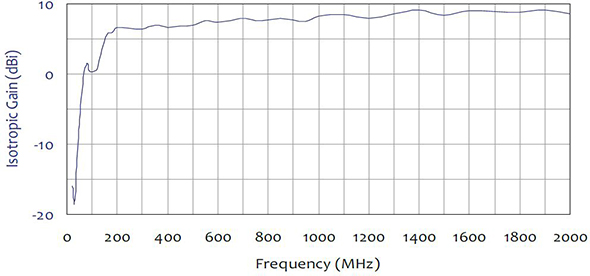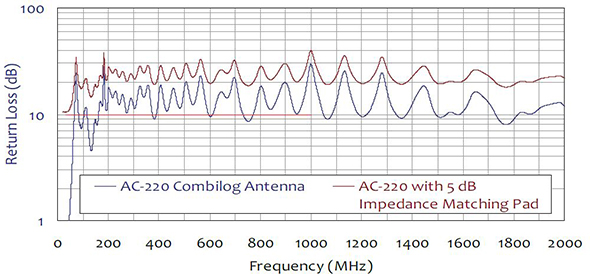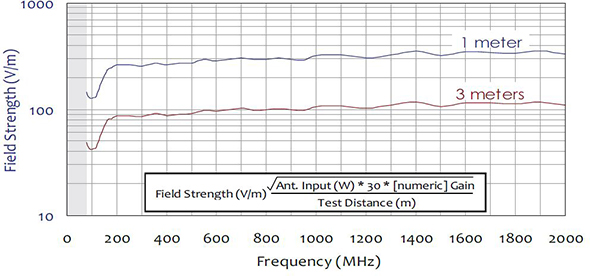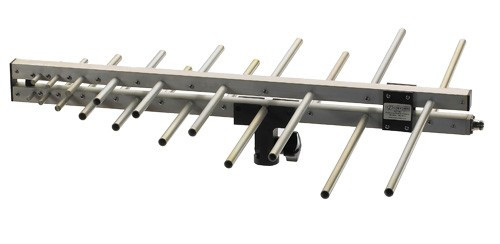Overview
Com-Power AC-220 CombiLog is a broadband, linearly polarized hybrid antenna. Hybrid antennas are, put simply, log periodic antennas with the feed lines modified to include a set of low frequency antenna elements, commonly referred to as “bow-tie” elements. Additionally, common-mode chokes are typically installed to reduce common-mode currents flowing on the outer conductor of the coaxial feed line/receive cable. By essentially combining a log periodic and biconical antenna, a hybrid antenna can typically cover, at a minimum, the frequency range of the combined antenna types.
The AC-220 operates from 20 MHz to 2 GHz as a receiving antenna. Using typical conventional antennas, four separate antennas would be necessary to cover the same frequency band.
Calibration
Each antenna is individually calibrated per ANSI C63.5 with NIST traceability. The calibration data and certificate is provided. Recognized ISO 17025 accredited calibration also available upon request.
Application
The AC-220 CombiLog Antenna is suitable for use as an EMI test antenna for qualification-level regulatory compliance measurements (FCC, CE, RTCA DO-160, FDA, SAE, etc.) over the frequency range of 20 MHz to 2 GHz.
The AC-220 is equally suitable for use as a transmitting antenna over the frequency range of 80 MHz to 2 GHz. The antenna is driven by an RF power amplifier for the purpose of establishing radiated RF fields for product immunity tests. It is capable of handling power levels up to 500 Watts.
Notwithstanding the above applications, the AC- 220 can also be used for test site comparisons, shielding effectiveness tests of large enclosures, field monitoring, site surveys, etc.
Mounting
The mounting assembly for the the AC-220 incorporates a hinge mechanism to quickly and easily change the antenna polarization. The assembly is equipped with a standard 1/4-inch x 20 mounting hole, which allows it to be affixed to a tripod or antenna mast or other similar structure. Com-Power’s AT-812 Tripod and AM-400 Antenna Mast, are the recommended supports for this antenna.
Typical Data
|
Antenna Factors |
Isotropic Gain |
|
Voltage Standing Wave Ratio (VSWR) |
Return Loss |
|
Typical Field Strength with 500W Input Power |
Typical Field Strength with 500W Input Power |



















